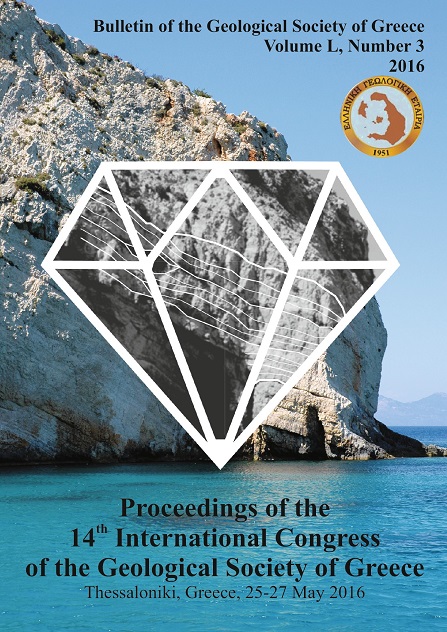MONITORING SEISMIC DISPLACEMENTS USING GNSS DATA WITH PPP METHOD

Abstract
The Precise Point Positioning (PPP) analysis method adapted for monitoring coordinate displacements from GNSS permanent stations data. One week period data were analyzed covering the Samothrace strong earthquake event of 6.8M. The sample data were processed with Bernese v5.2 PPP engine and with the online web platform of JPL which uses the GIPSY/OASIS v6.3 software package. Also, for validation purposes the output results were compared with those derived by network analysis by means of the GAMIT processing software of MIT. Our experiments proved the ability to measure dynamic seismic related coordinate variations at sub-centimeter level using the PPP algorithm. But this is efficient when strong earthquakes occurs and for stations close to epicenter.
Article Details
- How to Cite
-
Pikridas, C., Bitharis, S., Fotiou, A., Rossikopoulos, D., Katsougiannopoulos, S., Spanakaki, K., & Karolos, I. (2016). MONITORING SEISMIC DISPLACEMENTS USING GNSS DATA WITH PPP METHOD. Bulletin of the Geological Society of Greece, 50(3), 1563–1569. https://doi.org/10.12681/bgsg.11870
- Section
- Seismology

This work is licensed under a Creative Commons Attribution-NonCommercial 4.0 International License.
Authors who publish with this journal agree to the following terms:
Authors retain copyright and grant the journal right of first publication with the work simultaneously licensed under a Creative Commons Attribution Non-Commercial License that allows others to share the work with an acknowledgement of the work's authorship and initial publication in this journal.
Authors are able to enter into separate, additional contractual arrangements for the non-exclusive distribution of the journal's published version of the work (e.g. post it to an institutional repository or publish it in a book), with an acknowledgement of its initial publication in this journal. Authors are permitted and encouraged to post their work online (preferably in institutional repositories or on their website) prior to and during the submission process, as it can lead to productive exchanges, as well as earlier and greater citation of published work.


